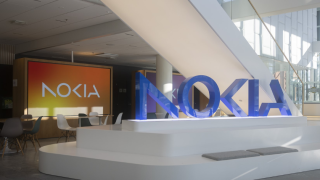Eventually Quintillion plans to extend its cable west to Tokyo and east to London, but the first section links the Alaskan coastal communities of Utqiaġvik, Wainwright, Point Hope, Nome and Kotzebue.
Interim CEO George Tronsrue said: “The Quintillion system makes it possible for local service providers to offer the same world-class products and services available long ago to consumers in the Lower 48.” That’s the term for the 48 states of the US between Canada and Mexico.
Crews completed installation of the Alaska Arctic portion of the international Quintillion subsea cable system in early October, and the company expects its customers to be live soon, enabling high speed broadband capability to consumers and businesses in these communities.
The system will deliver gigabit and higher bandwidth services on a 1,400 mile (2,250km) subsea and terrestrial fibre network, including a subsea trunk line from Prudhoe Bay to Nome with branching lines to the five communities.
Most of the cable installation occurred in 2016 and crews added resiliency to the system this summer and installed the last 40 miles of cable, completing in October.
In addition to the subsea cable system, Quintillion has installed terrestrial fibre between Fairbanks, in the centre of the state, and Prudhoe Bay on the north coast.
This terrestrial system – serving the Prudhoe Bay oil fields –has been providing commercial service since early in 2017.
In phase two of the project the company plans to extend the backbone cable from the Nome branching unit west to Asia, terminating in Tokyo, with options for additional branches into Alaska. Phase two will create an option for a diverse path out of the US to Asia.
Phase three will run east from Prudhoe Bay through the Canadian Arctic. Quintillion aims to connect to northern Canadian communities and then run across the north Atlantic to terminate in the UK.





